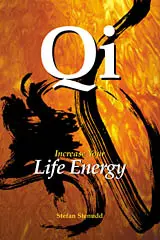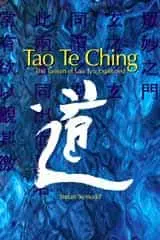|
Qi Energy Exercises
|
Qi Relaxation Exercises Relax your body to increase your qi energy flowRelax. That sounds easy enough, but in reality it is an almost superhuman task to do properly. Certainly, it is possible to make some muscles rest, without too much complication. You can do it as simply as sitting down in a chair, or lie down on a bed. That way, anyone can immediately relax to a certain degree. But there are so many muscles in the body. Even when you lie in your bed, lots of them are more or less tense.
Some muscles have important tasks around the clock, so they are never allowed to rest. But many others are tense, causing nothing but their slow deterioration. Some of these muscles have been unnecessarily tense for so long that you do not notice it anymore. That does not mean their tension lacks influence. They inhibit the natural flows in your body, and wear themselves down. The really difficult task is to make also these muscles relax. Relaxation is not an absolute concept with just one obvious meaning. It is relative. You can be more or less relaxed, but probably never completely relaxed – while you are alive. What you need to do is to find the level of relaxation that suits you, and makes your body comfortable. For a good flow of qi, it is not necessary that the muscles in your body become like jelly. The important thing is that they do not stiffen to the extent that they restrain the flow. One could say that the muscles need to be in a natural state. Whether they rest or contract, this should be in accordance with the bodily functions and the activity you are involved in. They should do what is needed of them – neither more nor less. When we do something strenuous, we often struggle not only with the muscles needed for the task, but also with muscles that contribute nothing. For example, when making an effort with something, we tend to tighten our jaws or pull up our shoulders, often as an unconscious reflex because of the mental strain. Such superfluous behavior needs to be worked off, if you want to intensify your qi flow and avoid overstrain, the tear that otherwise increases through the years. On the other hand, if you are involved in something that demands powerful work with some of your muscles, the qi flow is stimulated when these muscles get active. They do not need to relax in order for qi to flow freely through them, and through the rest of the body. So, the relaxation that this book aims at is one where the muscles work in a harmonious and functional way. Certainly, this also means that when they have nothing to do, they should really rest and be soft as jelly. This natural functionality of the muscles reveals a pursuable path for learning to relax them – the contrast between work and rest. Although it is difficult to feel what muscles contract unnecessarily, you can make the difference apparent by switching between contracting and releasing them. That is mainly how the relaxation exercises below work. Actually, the best method to relax is by breathing. Most breathing exercises have the effect that they help the body toward increased relaxation. But it is difficult to teach a body that is too tense how to breathe properly. A somewhat relaxed body, on the other hand, gets more and more relaxed by itself, from breathing exercises. Therefore the order in this book is such that we begin with some relaxation exercises, and work on breathing after that. When you have learned the exercises of this book, you will surely mix the order of them, and let them blend so that posture, relaxation, breathing, and so forth, are all trained in each of them. That is quite correct. The different aspects are connected, so they need to be practiced jointly – like it takes several people in cooperation to erect a huge statue. Now, on to the relaxation exercises. The first ones are some concrete exercises in changing between the contraction and release of muscles, so that you become aware of the difference and thereby easier make muscles relax when they should. It is quite difficult to relax muscles that are tense even when they do not need to be, because their tension has become an unconscious habit. So, do these exercises primarily to explore the difference between tension and relaxation, and how to consciously switch from the one to the other.
Qi Relaxation ExercisesHere is a set of simple exercises by which to make your body relax. That's important to release your body enough to increase your qi energy flow. I recommend you to follow the order given below, at least in the beginning, when you familiarize yourself with the exercises and what they do to you. After that, you can choose according to your own needs.
Qi Energy Exercises
Qi Exercise Settings
Qi Energy Breathing
Qi Posture
Qi Relaxation
Qi Extension
Qi Centering
The Book
My Books About Life EnergyHere are the two books I have written on the subject of life energy. This website contains some of the material from the first one. Click the image to see the book at Amazon (paid link).
About CookiesMy Other WebsitesLife EnergyThe many life force beliefs all over the world, ancient and modern, explained.
TaoisticTaoism, the old Chinese philosophy of life, based on Tao, the Way. Also, the complete Tao Te Ching translated and explained.
AikidoAikido, the peaceful martial art. Its basics, principles, techniques, and more — in texts, images and videos.
I Ching OnlineThe 64 hexagrams of the Chinese classic I Ching and what they mean in divination. Free online reading.
Other Books by MeClick the image to see the book at Amazon (paid link).

Stefan StenuddAbout Me I'm a Swedish author and aikido instructor. I've written several books about aikido, qi energy and other life force concepts. I'm also an historian of ideas, researching the thought patterns in creation myths. Click the image to get to my personal website. Contact
|
 Qi — Increase Your Life Energy
Qi — Increase Your Life Energy


